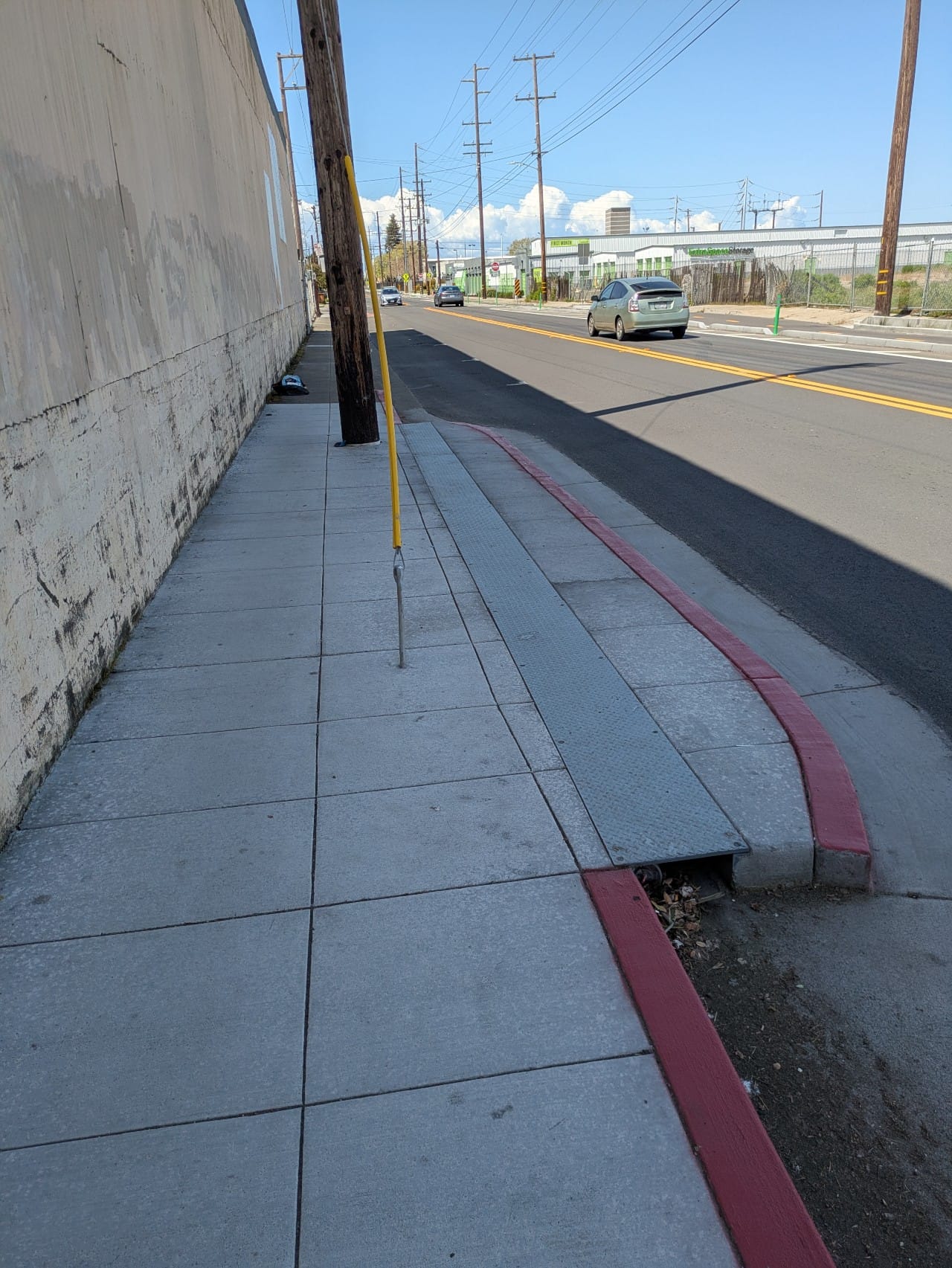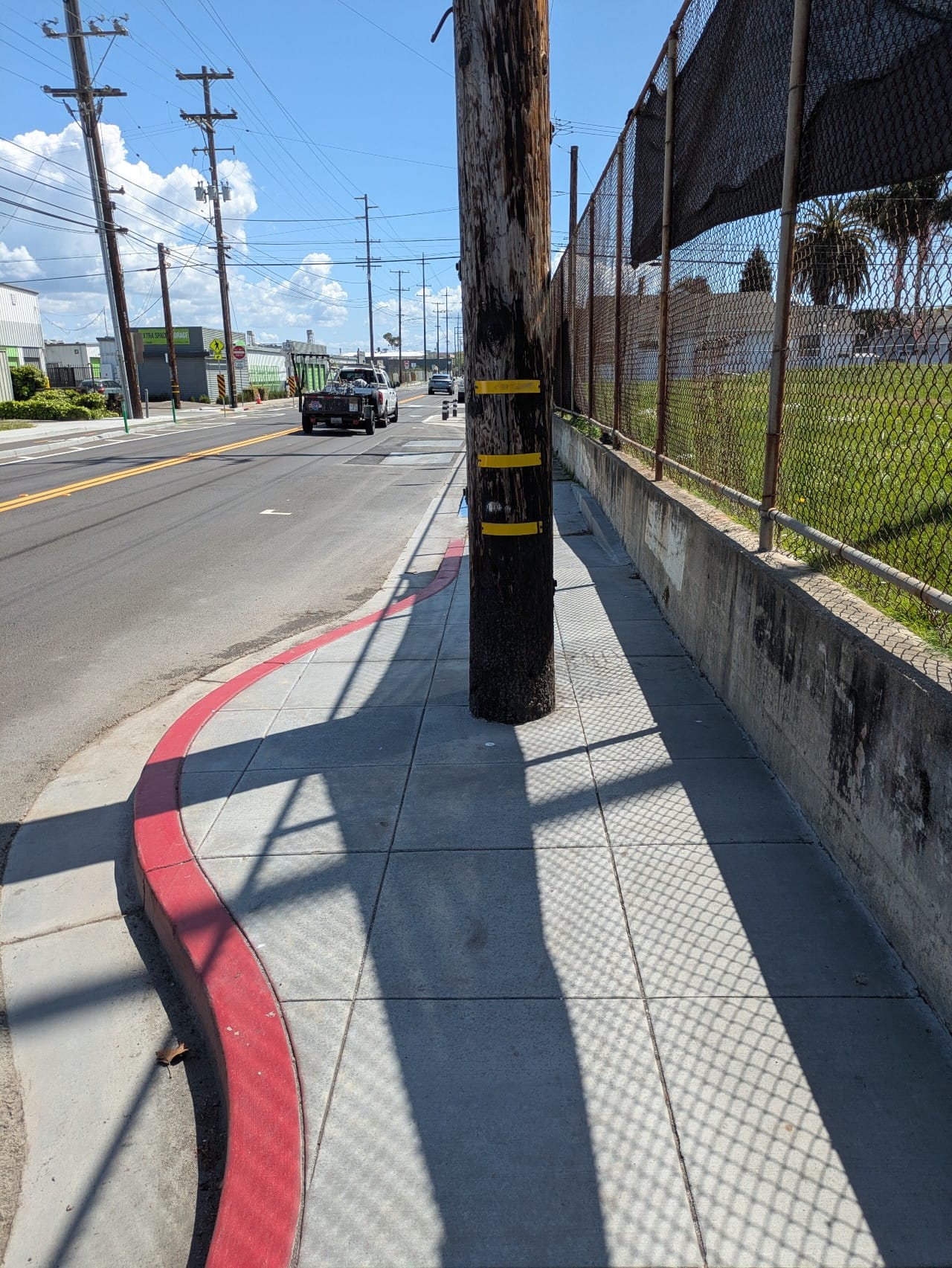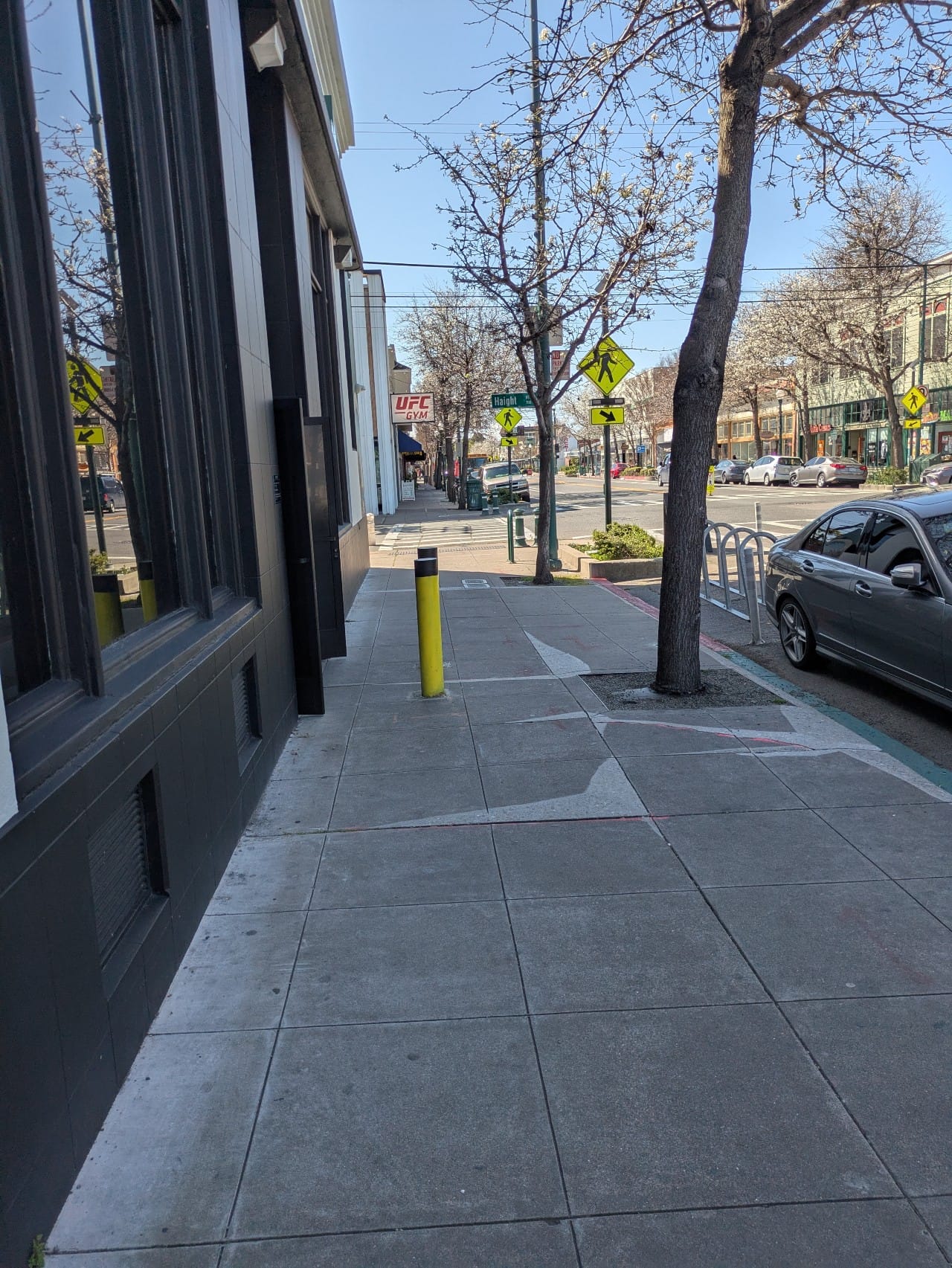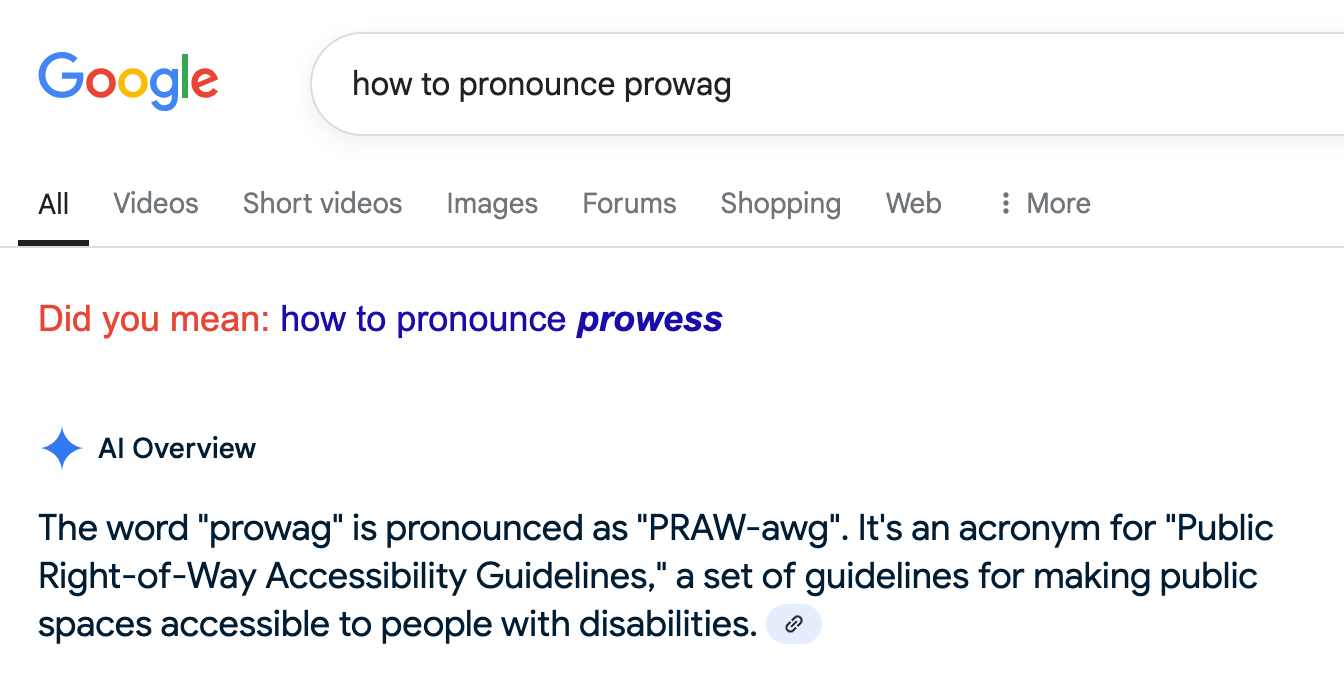Among the many accomplishments of the Biden/Harris administration – an event that received significantly less press than his son's laptop or the costs of Doordash'ing burritos from Chipotle, both of which were purportedly his, and then by extension her, fault – was the formal adoption, after 33 years of delay, of PROWAG.
An acronym? you may reply. Why does it matter that the bureaucrats coined yet another acronym?
In adopting this acronym, the Biden/Harris administration accomplished a goal that had been unfinished since the passage by Congress in 1990 of the Americans with Disabilities Act.
ADA. Another acronym? Yes. Another acronym.
The ADA is often thought of as ensuring that people in wheelchairs, or with vision impairments, or other mobility impairments can get around inside public libraries, school buildings, banks, grocery stores, etc. And the ADA is commonly known to extend out to designated parking spots with space for vans and ramps and so on. In fact, the ADA extends further than that: The ADA entitles Americans of all abilities to access all public facilities — including the broader public realm of built environments. It's just that for multiple decades, there were no formally adopted federal guidelines specifying exactly how sidewalks and crosswalks and curb ramps and other "public right-of-way" (that's the PROW) would actually be deemed accessible (that's the A).
So while Biden couldn't keep Trumpism at bay and failed to give Harris enough time to do so on her own terms, their appointees did finish this particular job: They adopted a full set of enforceable guidelines (the G in PROWAG) that ensure Americans of all abilities are both legally and physically able to reach their destinations. And for what it's worth, so far, PROWAG and the U.S. Access Board (the independent federal agency responsible for administering it) don't appear — at least outwardly — to have been destroyed by either the Project 2025 crew or the Elon Musk crew.
All that said, what brought the catchy acronym of "PROWAG" into my mind a few weeks ago wasn't anything in Washington, D.C. — it was a long walk around Alameda.
Walking along Clement
Walking along Clement Ave, where the recently rebuilt sidewalk always ensures that a traveler in a wheelchair has sufficient room to maneuver:


along Clement Ave
This now-standard width requirement is also beneficial for caregivers pushing kids in strollers.
Walking along Webster
By contrast, when my long walk took me to Webster St, I was surprised to see haphazardly placed posts suddenly jut out of the sidewalk:


along Webster St
This marijuana dispensary was most certainly not thinking about PROWAG or the ADA when they installed these fixed obstacles into the public right-of-way on Webster St. They were probably only thinking about hypothetical nighttime robbers aiming to break open the business's doors with a car.
But by installing these obstacles into the public sidewalk, they've created problems for people in wheelchairs, pushing strollers, and navigating with white canes — and created a problem for the City of Alameda.
While I didn't have a tape measure in hand to check for a minimum of 4 ft. clearance, after walking past, I did check and see that this had already been reported to the city via SeeClickFix. I tried but failed to find matching code enforcement actions listed in the city's Accela system (although Accela is almost impenetrable, so I may not have been searching properly).
It's somewhat surprising that even a few weeks after my walk, now with a moment to return to this blog post my the drafts folder, these privately installed impediments are still standing in the public right-of-way on Webster St.
The city would care if this affected drivers
In contrast:
- A few years ago, when advocates placed memorial markers near the sites of two traffic fatalities, City of Alameda insisted on removing the white "ghost bikes," even though they were fully outside of the roadway. Public Works staff argued, from what I recall, that the objects were distractions to drivers.
- Parents at schools who help families drop their kids off in the morning have been required by the City of Alameda to apply for an "encroachment permit" to place plastic traffic cones in the public right-of-way during this drop-off period.
So, city staff do have angle grinders available to remove physical objects from the public right-of-way and they do have paperwork and a process for reviewing — or denying — private uses of the public-right-of-way.
It's disappointing to see how quickly the City of Alameda can act when unauthorized memorial displays or plastic cones may threaten the primacy of drivers in the public right-of-way, as opposed to how apparently lackadaisical the City of Alameda is about privately installed impediments to pedestrians in the public right-of-way.
An opportunity to improve the "furnishings zone" of Alameda's business corridors
Instead of just calling out this differential in response, let me end by framing this as an opportunity:
- This business owner wants to protect their entryway from cars. It's not an entirely unfounded fear, given recent reports of robberies of this sort around the East Bay.
- The City of Alameda should also want to protect the sidewalks in the city's core business districts from intrusion from inattentive drivers — which has been happening with too much regularity. (This blog previously posted video of a driver crashing into Gong Cha on Park. I had but can't currently find photos of a driver crashing into Marley G's further down Park.)
To properly address both concerns just means paying attention to how PROWAG (and the many local and state accessibility guidelines that predated PROWAG) divides sidewalks up into zones:

The dispensary's barricades are installed in the pedestrian zone (typically the center of the sidewalk). PROWAG requires this area be available to serve as a continuous and clear pedestrian access route. Instead, where barriers belong is the furnishings zone, the outer portion of the sidewalk closest to the curb (when the sidewalk is sufficiently wide).
When barrier features are installed in the furnishings zone, they don't block pedestrians, they protect pedestrians from distracted drivers entering the sidewalk, and they protect buildings from drivers intentionally trying to barrel into building entries.
Planters, trees, bollards... the features can be both functional and attractive.
In this particular case on Webster, it does look like the City of Alameda is overdue to send a crew to remove these private obstacles out of the public right-of-way. Afterwards, there are a wide range of design options to potentially offer to businesses looking to "harden" the sidewalks near their buildings in a manner that conforms to accessibility requirements and improves the overall streetscape.
Postscript: How is PROWAG pronounced?
Per Google's so-called "AI Overview," PROWAG is pronounced as "PRAW-awg":

But don't always believe what large language models tell you... In this video, U.S. Access Board staff say aloud "pro" (as in professional) and "wag" (as in a dog's tail). Doesn't that just roll off your tongue? PROWAG. A quality acronym for a quality set of requirements.